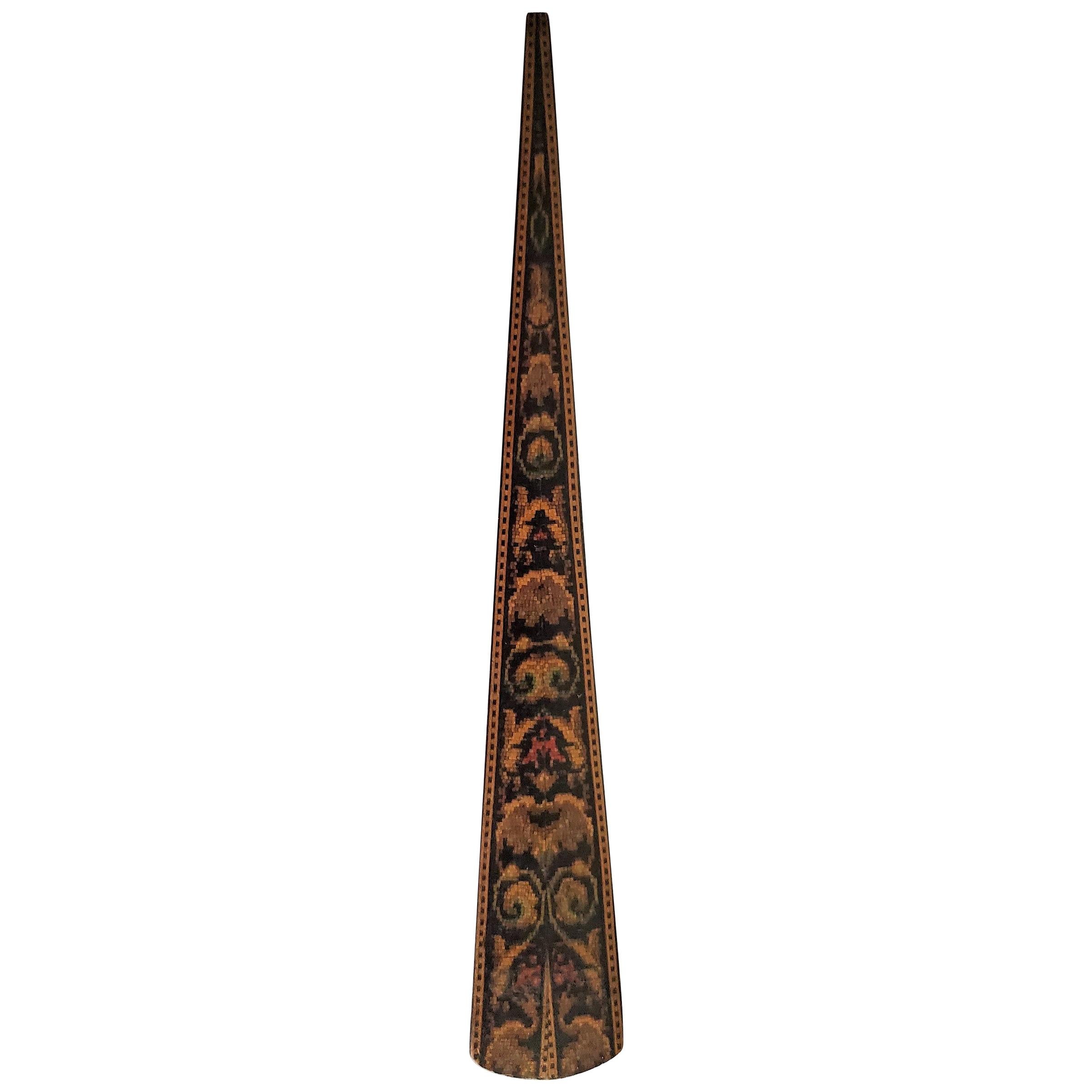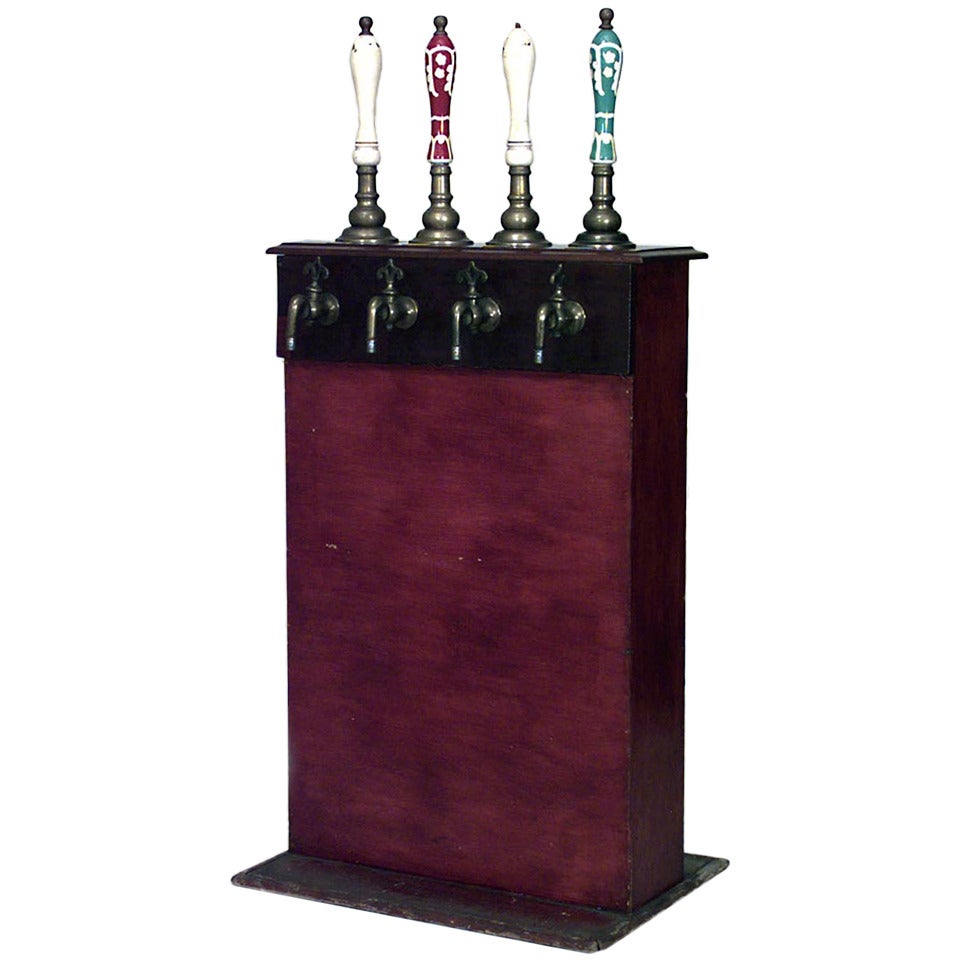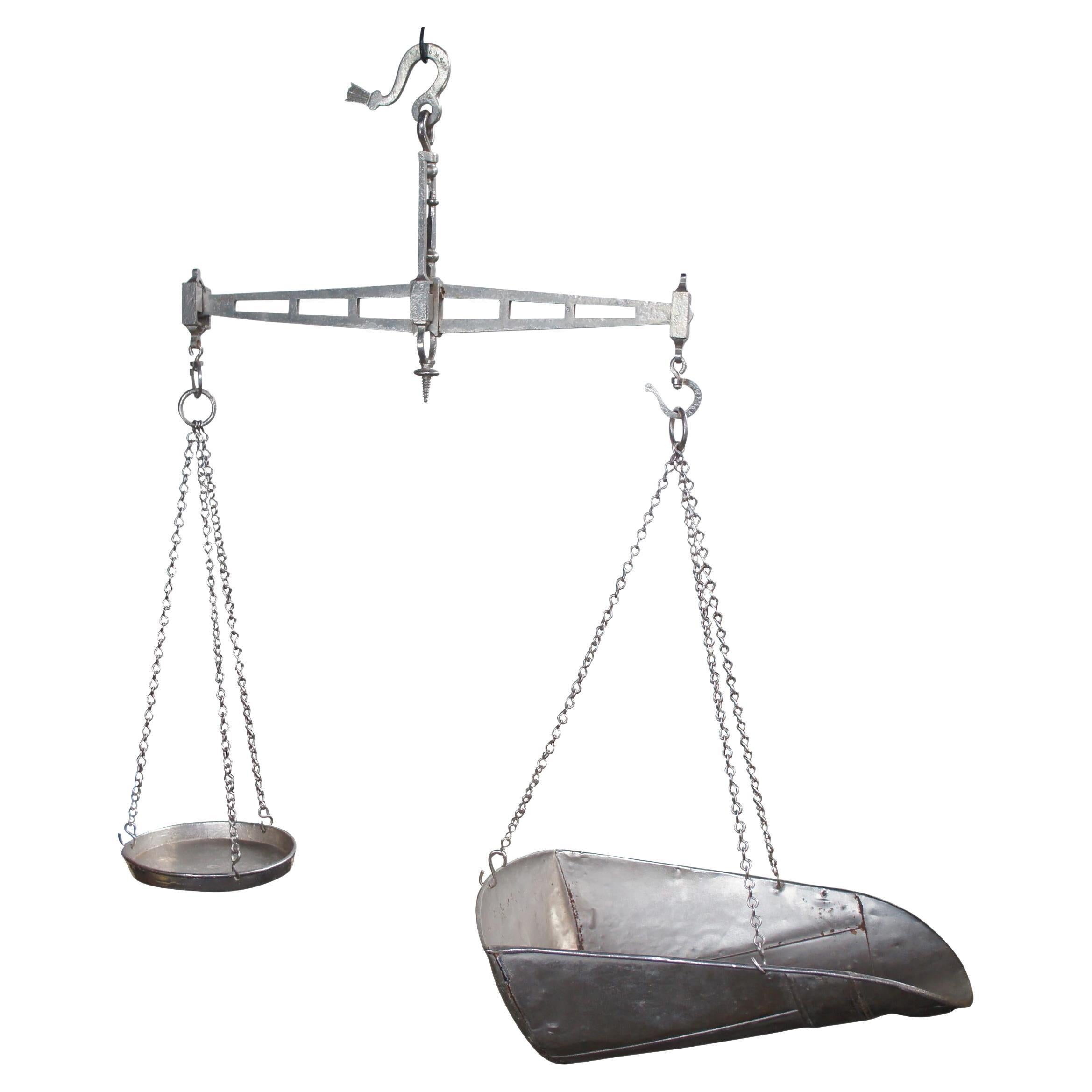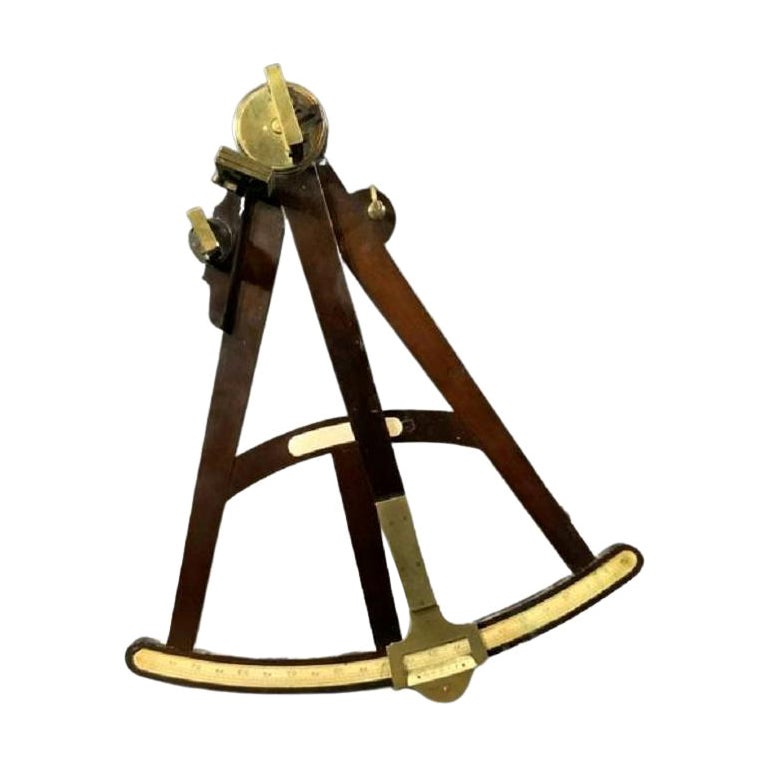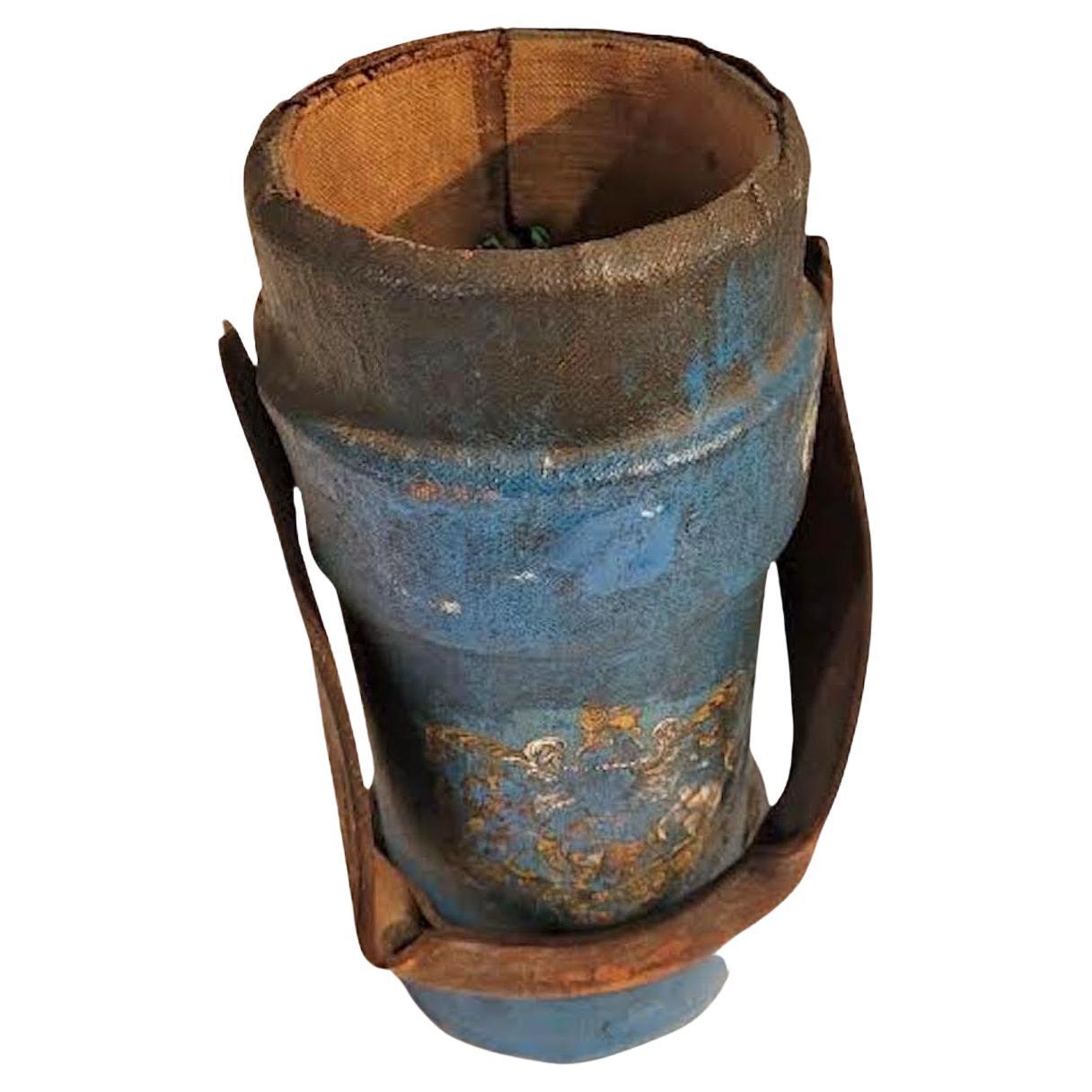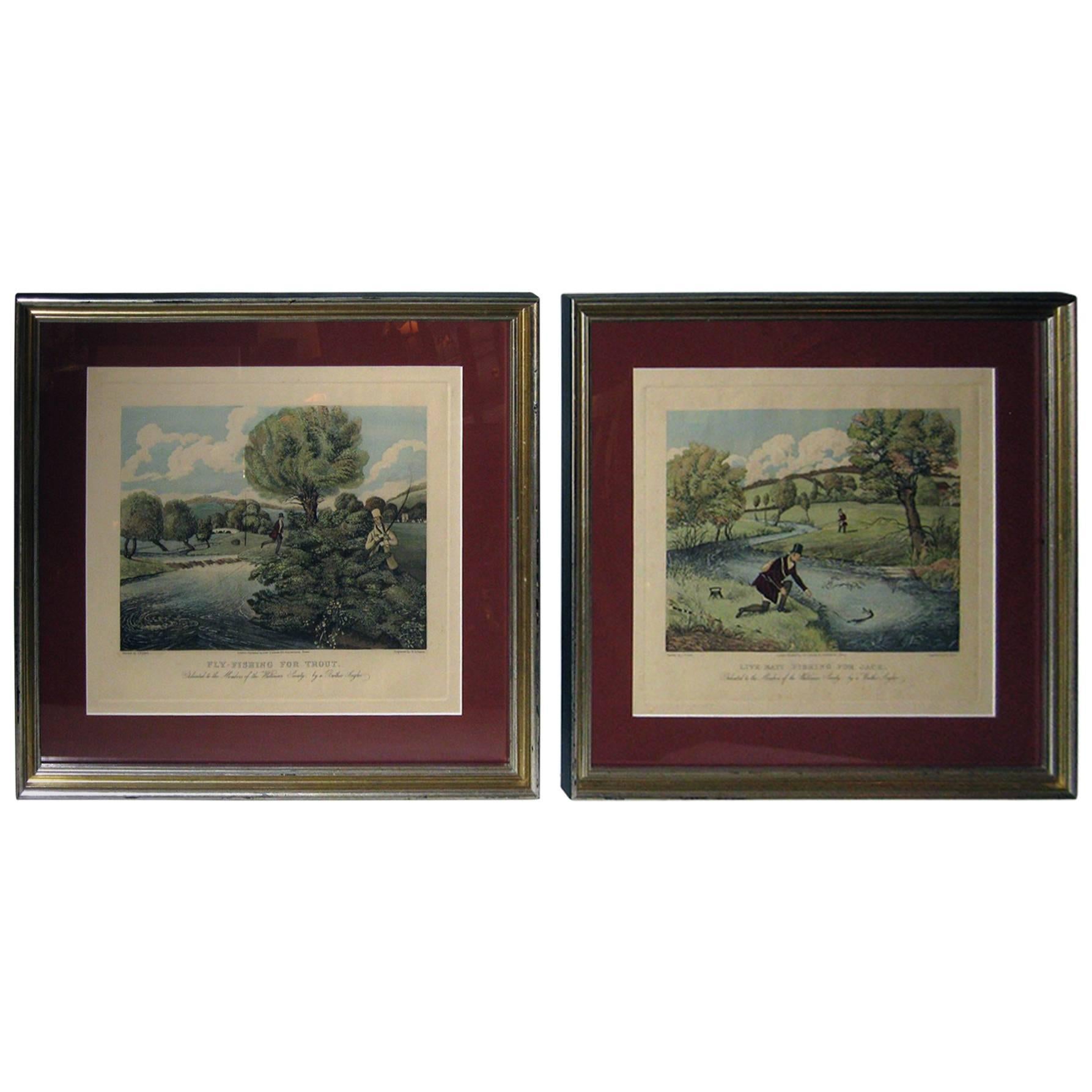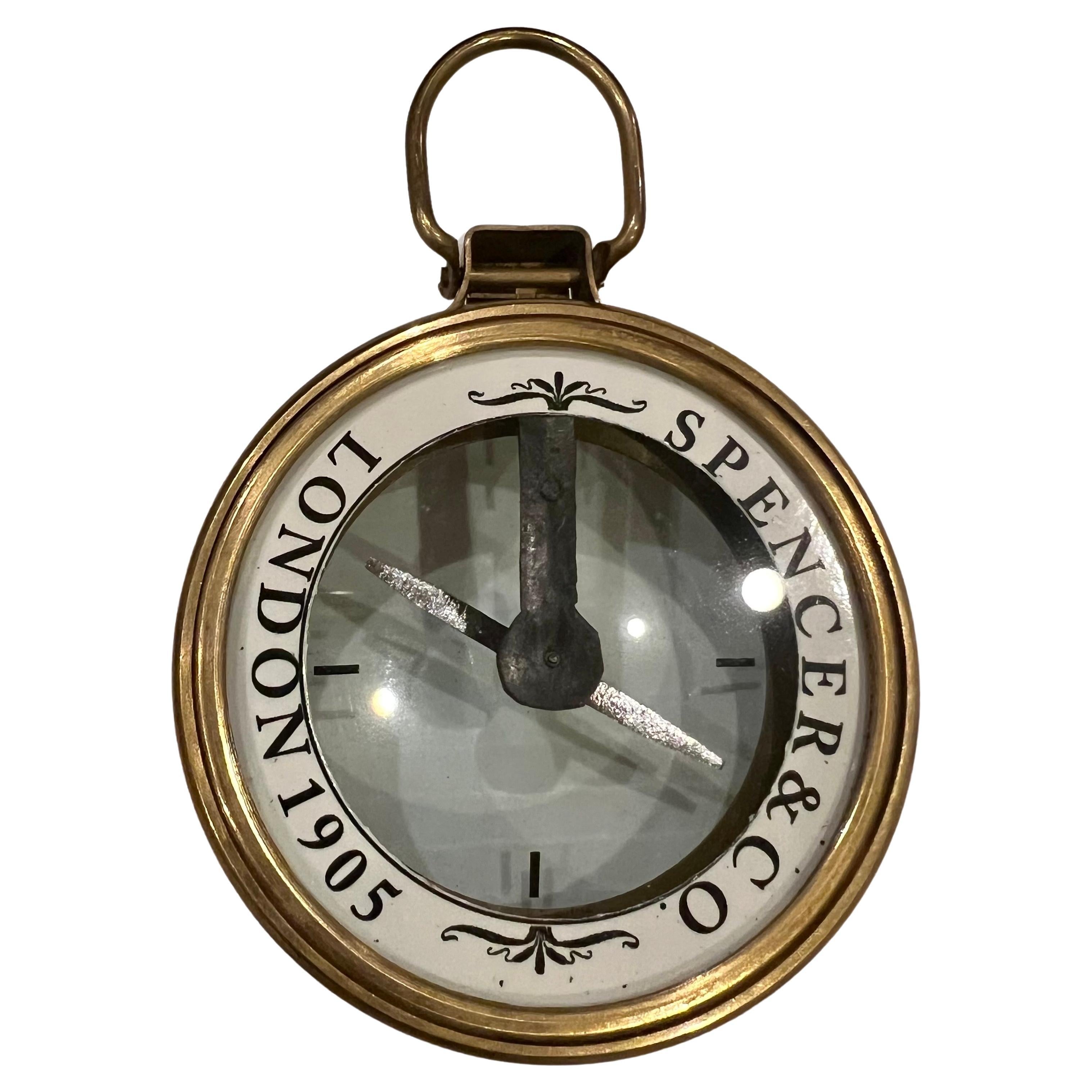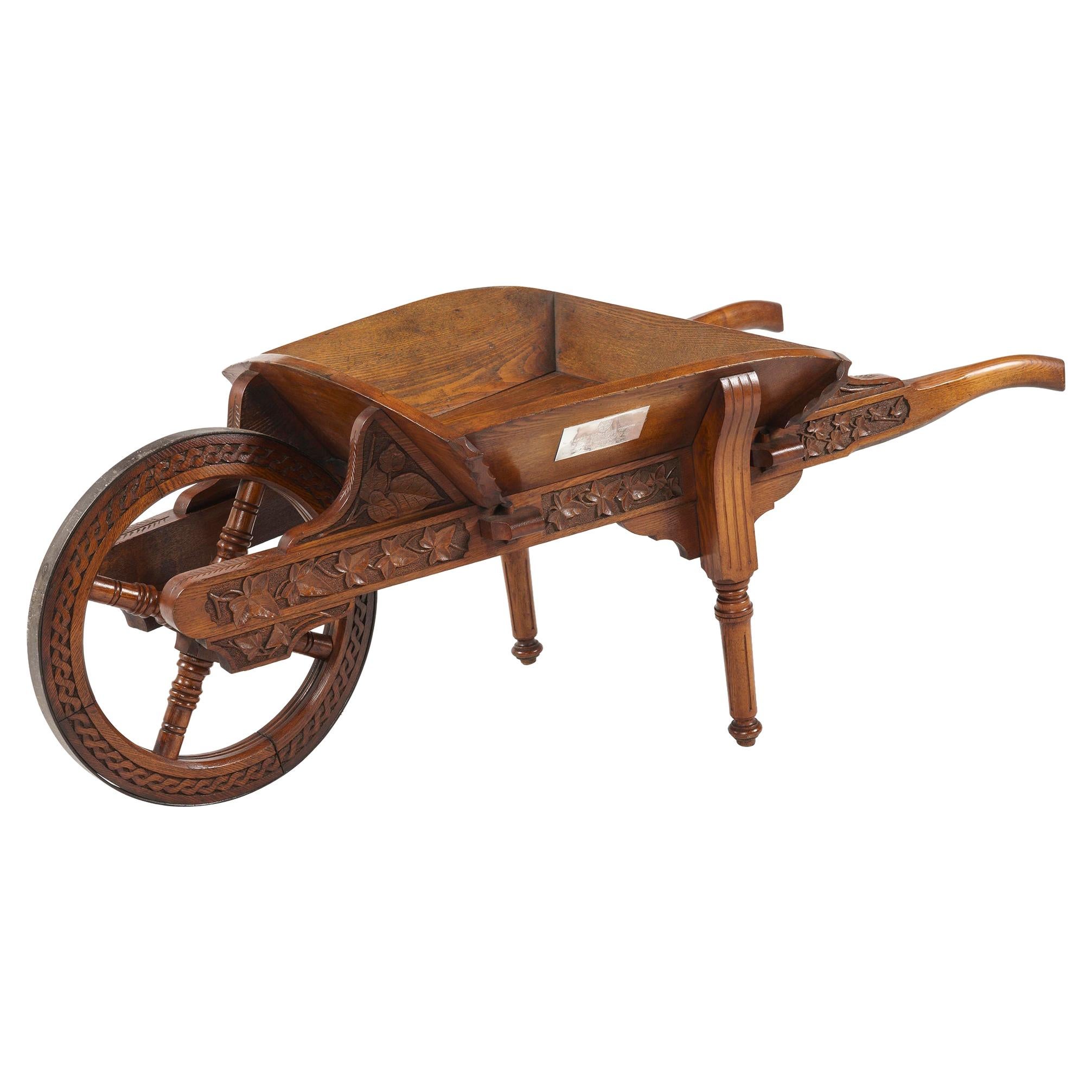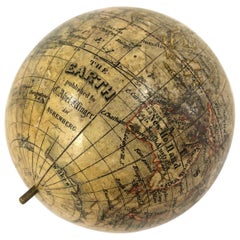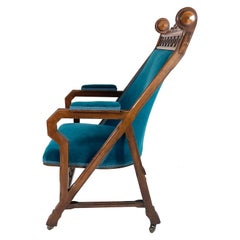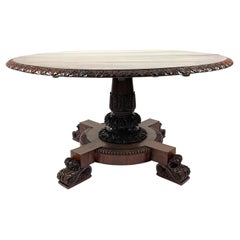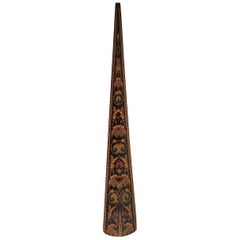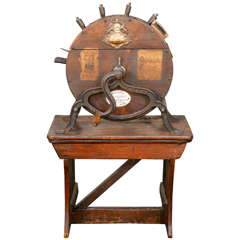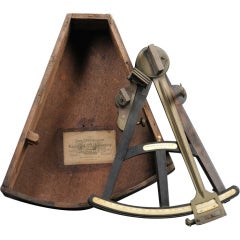
Rare 19th C English Octant by Spencer & Barrett
View Similar Items
Want more images or videos?
Request additional images or videos from the seller
1 of 11
Rare 19th C English Octant by Spencer & Barrett
About the Item
- Dimensions:Height: 13.13 in (33.36 cm)Width: 10.5 in (26.67 cm)Depth: 3.5 in (8.89 cm)
- Materials and Techniques:
- Place of Origin:
- Period:
- Date of Manufacture:circa 1840-50
- Condition:Wear consistent with age and use. Very good antique condition.
- Seller Location:Essex, MA
- Reference Number:1stDibs: U12060283771009
About the Seller
5.0
Vetted Seller
These experienced sellers undergo a comprehensive evaluation by our team of in-house experts.
Established in 1998
1stDibs seller since 2007
192 sales on 1stDibs
More From This SellerView All
- 19th Century German Miniature Pocket Terrestrial GlobeBy C. Abel-KlingerLocated in Essex, MAA miniature 19th century 3.5 inch diameter pocket terrestrial globe by C. Abel-Klinger, Nuremberg, Germany, in English for the English speaking markets. Signed with cartouche reading...Category
Antique 1880s German Scientific Instruments
MaterialsBrass
$1,875 Sale Price25% Off - 19th Century Gothic Revival ArmchairLocated in Essex, MAA 19th century Gothic Revival armchair in carved walnut upholstered in Holland and Sherry turquoise velvet. Inspired both by Japanese design and Eng...Category
Antique 1870s American Gothic Revival Armchairs
MaterialsLeather, Walnut
$2,080 Sale Price20% Off - Spectacular 19th Century William IV Rosewood Dining or Center TableLocated in Essex, MAA fine quality, generously proportioned William IV rosewood center or dining table, the round top showcasing the extraordinary color and figure of the lively wood grain. It is edged ...Category
Antique 1830s English William IV Dining Room Tables
MaterialsHardwood
- 19th C Octagonal Table with Inlaid Marble Top with Brass Shells and FlowersLocated in Essex, MAA late 19th century Italian or Spanish carved oak octagonal center table, the top with beautifully inlaid specimen marble top decorated with cast brass scallop shells and flower head...Category
Antique Late 19th Century Italian Baroque Revival Center Tables
MaterialsMarble, Brass
- English Regency Egyptian Revival Black and Gold Overmantel MirrorLocated in Essex, MAAn English Regency neoclassical Egyptian Revival overmantel mirror, ebonized and parcel-gilt, of rectangular form, with pilasters on each sid...Category
Antique Early 19th Century Egyptian Revival Mantel Mirrors and Fireplace...
MaterialsMirror, Hardwood
$5,472 Sale Price20% Off - Swiss Silver Covered Tureen by Baltensperger, circa 1920sBy BaltenspergerLocated in Essex, MAA very fine quality handmade Swiss sterling silver covered tureen, of circular form, with hand-hammered cover and base, both of which have decorative ribbing, with oval loop handle o...Category
Vintage 1920s Swiss Arts and Crafts Sterling Silver
MaterialsSterling Silver
You May Also Like
- Rare 19th Century English Tunbridgeware Hair Pin or SlideLocated in Dallas, TXPresenting an absolutely gorgeous and extremely unique and rare 19th century British Tunbridgeware hair pin/bobbin or slide. This slide is unlike any of it’s kind we have seen before…. it is a very rare survivor ! From circa 1860–1880. Made of walnut with gorgeous marquetry inlay on the entirety of the front with classic Tunbridgeware micro-mosaic all over the front. The rear is walnut. The marquetry inlay appears to be various different woods, namely, maple, walnut and satinwood. Would have been worn in a Lady’s hair bun with the micro-mosaic facing forward. This would have belonged to a very elegant lady in the mid to late 19th century. Tunbridge ware is a form of decoratively inlaid woodwork, typically in the form of boxes, that is characteristic of Tonbridge and the spa town of Royal Tunbridge Wells in Kent in the 18th and 19th centuries. The decoration typically consists of a mosaic of many very small pieces of different coloured woods that form a pictorial vignette. Shaped rods and slivers of wood were first carefully glued together, then cut into many thin slices of identical pictorial veneer with a fine saw. Elaborately striped and feathered bandings for framing were pre-formed in a similar fashion. There is a collection of Tunbridge ware in the Tunbridge Wells Museum and Art Gallery in Tunbridge Wells. The famous makers of Tunbridge ware were in the Tunbridge Wells area of Kent; their most notable work was from circa 1830-1900. Early makers of Tunbridge ware, in Tunbridge Wells in the mid-18th century, were the Burrows family, and Fenner and Co. In the 19th century, around 1830, James Burrows invented a technique of creating mosaics from wooden tesserae. Henry Hollamby, apprenticed to the Burrows family, set up on his own in 1842 and became an important manufacturer of Tunbridge ware, employing about 40 people. Edmund Nye (1797–1863) and his father took over the Fenner company when William Fenner retired in 1840, after 30 years in partnership with him. Thomas Barton (1819–1903), previously apprenticed at the Wise factory, joined the Nyes in 1836, and worked as Nye’s designer; he took over the business in 1863 and continued there until his death. In Tonbridge (near to Tunbridge Wells), George Wise (1703–1779) is known to have had a business in 1746. It continued with his son Thomas, and Thomas’s nephew George (1779–1869), who took over in 1806. In its early years the company made articles such as workboxes and tea caddies with prints of popular views; later items had pictures created from mosaics. Their workshop in Tonbridge, Wise’s Tunbridge Ware Manufactory, was next to the Big Bridge over the Medway; the building was demolished in 1886 to widen the approach to the bridge. Tunbridge ware became popular with visitors to the spa town of Tunbridge Wells, who bought them as souvenirs and gifts. Articles included cribbage boards, paperweights, writing slopes, snuffboxes and glove boxes. At the Great Exhibition of 1851, Tunbridge ware by Edmund Nye, Robert Russell and Henry Hollamby was shown; Edmund Nye received a commendation from the judges for his work. He exhibited a table depicting a mosaic of a ship at sea; 110,800 tesserae were used in making the picture. The manufacturers of Tunbridge ware were cottage industries, and they were no more than nine in Tunbridge Wells and one in Tonbridge. The number declined in the 1880s; competent craftsmen were hard to find, and public tastes changed. After the death of Thomas Barton in 1903 the only surviving firm was Boyce, Brown and Kemp, which closed in 1927. Marquetry was an old technique which was continued by Nye and Barton to create images such as birds or butterflies. ‘Green Oak’ as caused by the fungus Chlorociboria aeruginascens. Stickware and half-square mosaic was invented by James Burrows in about 1830: a bunch of wooden sticks of different colours, each having triangular or diamond-shaped cross section, were tightly glued together; in the case of stickware, the resulting block was dried, then turned to form an article such as the base of a pincushion. For half-square mosaic, thin slices were taken from the composite block, and applied to a surface.[1][2][4] Tesselated mosaic, was a development by James Burrows of half-square mosaic; it was adopted by George Wise and Edmund Nye. Minute tesserae were used to form a wide variety of geometric and pictorial designs. Many sorts of wood were used for the various colours; about 40 were in regular use. Only natural colors were used; green was provided by “green oak”, produced by the action of fungus on fallen oak. Designs for articles were often taken from designs of Berlin wool work.Category
Antique Late 19th Century English High Victorian Collectible Jewelry
MaterialsSatinwood, Walnut
- 19th Century English Knife SharpenerLocated in Los Angeles, CA19th c. English Knife Sharpener in Oak and PineCategory
Antique 19th Century English More Furniture and Collectibles
MaterialsOak, Pine
- Rare Antique 19th C Reuben Sutcliffe English Nickel Plated Hanging Balance ScaleLocated in Dayton, OH"Monumental 19th century English general store balance by Reuben Sutcliffe of Manchester. Made from Iron with a rich nickel plated finish. The company traded on Thomas Street, Manchester, Uk, from about 1825 until after the turn of the 20th century. The founder being George Sutcliffe The antique apothecary scale...Category
Antique Late 19th Century Industrial Scientific Instruments
MaterialsIron, Nickel
- 19th c. English Beer Engine by A. Reynolds & Co., LeedsBy A. Reynolds & Co.Located in New York, NYNineteenth century English pub beer engine with a rectilinear wooden stand topped with four brass and porcelain spigots, two white, one red, and one green....Category
Antique 19th Century British Barware
MaterialsBrass
- Rosewood Ship's Navigators OctantLocated in Norwell, MAShip's octant with rosewood frame, brass filters, mirror and peepsight. Unsigned. Overall dimensions: 3" x 13" x 16". 2 pounds.Category
Antique 1840s Nautical Objects
MaterialsBrass
- Antique English Brass & Glass Elegant Compass by Spencer & Co LondonBy Spencer & CompanyLocated in San Diego, CABeautiful elegant compass circa 1970's in solid brass with glass bt spencer & Co.Category
20th Century English Hollywood Regency Aviation Objects
MaterialsBrass
Recently Viewed
View AllMore Ways To Browse
Antique Pencil Boxes
Antique Pencil Box
Antique Cha
Brass And Bone Mirror
Antique Mirrors Boston
Used Survey Instruments
Office Cha
Bones Divider
Surveying Instrument
Survey Instruments
Antique Navigation Instruments
Antique Navigational Instruments
Antique Survey Instruments
Antique Surveying Instruments
Antique Brass Surveying Instruments
Antique Octant
Instruments Used For Navigation
Instrument Used For Navigation
